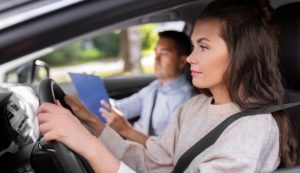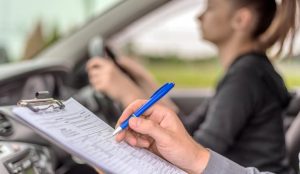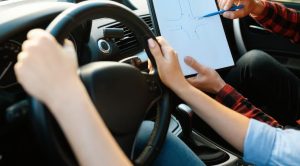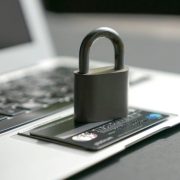
10 Reasons for Failing Your Driving Test in London
With 2024 upon us, people across the nation have set New Year resolutions; for many, this will be learning to drive.
Since COVID-19 forced the country into nationwide lockdowns, the amount of people wanting to take their driving test has increased, creating a backlog that the DVSA is still attempting to get on top of.
In some areas of the UK, people have to wait north of six months to get a driving test in many places, and with more people turning 17 every day, it has never been harder to pass your driving test.
For learners taking their driving lessons in London, we found that they not only struggled with booking a test, but due to the higher stress of driving in the capital, learners struggled with 10 key points, which, if they are unable to improve on, will cause them to fail their test.
We spoke to Anthony Johnson, the Director of DRIVE 321 Driving School, and asked him how he would advise learners on the best way to prevent these 10 faults from happening.
Why Do Learners Fail Their Driving Test?
1. Failing to make effective observations at junctions

In 2021, more than a third of all collisions reported in Great Britain were due to drivers failing to look properly. When approaching a junction, you must make the proper observations to avoid any potential crashes or incidents. When approaching a junction, you must reduce your speed as you approach to allow more time to make safe observations. By checking on the flow of traffic frequently, you can ensure a safe drive.
2. Not using mirrors correctly when changing directions
You should constantly check one of your three mirrors, depending on what action you carry out in the car. When turning left or right, you must check your interior mirror and the mirror of the direction you intend to turn. When braking, you must check your rearview mirror; when leaving a roundabout or manoeuvring, you must also check your mirrors. We have found that several learners often forget to check their mirrors because of the stress of their driving test. However, examiners are trained to spot mirror checks, and you can fail your test if you are not checking your mirrors, as it could cause you or other road users to be at risk.
3. Not moving off safely
One of the highest reasons learners fail their driving test is due to failing to move off safely. When taking your driving test, you need to be able to move away from the side of the road, on a slope or hill and from behind a parked vehicle. When moving off, you must conduct your 360-degree observation and be fully aware of your surroundings. If your examiner feels that you are unaware of road users or pedestrians around you or fail to indicate that you are heading off, this can land you with a fail. You should be comfortable performing these manoeuvres by the time you approach your test, and provided you can handle the pressure of your driving test; this shouldn’t cause you to slip up.
4. Having incorrect positioning when turning right at junctions

Ensuring that you have proper road positioning is always essential. However, learners become unstuck when it comes to being in the correct position when turning right. When turning right at a junction or from a major to a minor road, you must be as close to the centre of the road as possible while being safe. If you are on the opposite side of the road or need to be farther over, this can cause you to fail your test. More so, if you are in the wrong lane to turn right but do so anyway, you could find yourself with a fail due to the severity of this decision.
5. Failing to have proper control when steering
If you lose control of the car and your examiner needs to step in, you will automatically fail your test. You must always be in control of the vehicle, and being in constant control of the vehicle is crucial. You must show your examiner that you can steer the car smoothly and at the appropriate time to ensure that you don’t hit a curb or swing towards a car.
6. Incorrectly responding to traffic lights
When you encounter traffic lights, you need to ensure that you act accordingly and safely. If you find yourself speeding up to go through a green light, your examiner will mark you down for this. Traffic lights are a daily task when driving, and you need to ensure you drive safely and confidently. If you see the light is about to turn red, you must show that you are slowing down and be prepared to stop. If you pass the lights while they are red or fail to stop, you will fail your test. You need to show the examiner that you are safe on the road to yourself and other road users.
7. Failing to respond to traffic signs correctly

This is similar to that of incorrectly responding to traffic lights, where you will fail your test if you respond incorrectly. You must show the examiner that you can respond and react promptly and correctly to all traffic signs. You may find a test route that sees you on a road with no entrance sign ahead; you must show the examiner that you have seen this and follow the road so that you obey all of the signs.
8. Poor positioning when driving
This is similar to that of having a good position when turning right. However, you must ensure your position is always accurate and safe. If you are too close to the curb, on the other side of the road or not in the centre of your lane, your examiner may grab the wheel, resulting in you failing your test. During your test, you must prove you are a safe driver. Staying in the middle of your lane and having good lane discipline at roundabouts and junctions will show your instructor that you are safe and should pass your test.
9. Failing to follow road markings
When your examiner asks you to carry out the independent part of your driving test or provides you with directions, you need to follow those safely and do so by following the directions on road signs and road markings. If your examiner tells you to go straight at a roundabout, you have to ensure you are in the correct lane. If you find yourself in the wrong lane and heading in the wrong direction, this won’t be an automatic fail; however, taking the designated exit whilst in the wrong lane and doing so in a dangerous manner will lead to a fail.
10. Losing control of the vehicle when manoeuvring

A big part of your driving test is your manoeuvre; if you lose control of the vehicle or fail to manoeuvre, you will fail your test. When it comes to the manoeuvre, the best thing to do is to take a breath, tackle it slowly and methodically and try to remain calm. By staying calm and tackling the manoeuvre slowly and confidently, you can carry out the task to a high standard.
If you follow the advice listed above and can keep calm under pressure, you will have no issues passing your driving test and you can get your driving licence. The best thing to do is to stay calm, perform mock tests in the run-up to the real thing and ask your instructor to cover any topics you are unsure about.





